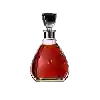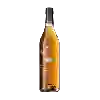
Winery Terres des TempliersMise Précoce Ravaner Banyuls Blanc
This wine generally goes well with poultry, rich fish (salmon, tuna etc) or shellfish.
Food and wine pairings with Mise Précoce Ravaner Banyuls Blanc
Pairings that work perfectly with Mise Précoce Ravaner Banyuls Blanc
Original food and wine pairings with Mise Précoce Ravaner Banyuls Blanc
The Mise Précoce Ravaner Banyuls Blanc of Winery Terres des Templiers matches generally quite well with dishes of rich fish (salmon, tuna etc), shellfish or poultry such as recipes of pasta with tuna and tomato, squid from the mouth of the cavado river (portugal) or cajun jumbalaya rice.
Details and technical informations about Winery Terres des Templiers's Mise Précoce Ravaner Banyuls Blanc.
Discover the grape variety: Cabernet-Jura
An interspecific cross between Cabernet Sauvignon and a still unknown relative, obtained in 1991 by Valentin Blatter of Soyhières (Switzerland). Cabernet-Jura can be found in Switzerland, Belgium, the Netherlands, Germany, etc., but is still little known in France.
Informations about the Winery Terres des Templiers
The Winery Terres des Templiers is one of of the world's great estates. It offers 98 wines for sale in the of Banyuls to come and discover on site or to buy online.
The wine region of Banyuls
Banyuls wines come from the South-eastern Part of Roussillon, in the south of France, in the lower Pyrenees, a few kilometres from the Spanish border. These naturally Sweet wines are consumed both as an aperitif and as a dessert. They come in a wide range of hues, from GoldenGreen (Banyuls Blanc) to Amber (Banyuls Ambré) to the intense garnet of the standard Banyuls Rouge. Unusually among the natural sweet wines of France, all Banyuls wines are made primarily from Grenache grapes of various colors.
The wine region of Languedoc-Roussillon
Languedoc (formerly Coteaux du Languedoc) is a key appellation used in the Languedoc-Roussillon wine region of southern France. It covers Dry table wines of all three colors (red, white and rosé) from the entire region, but leaves Sweet and Sparkling wines to other more specialized appellations. About 75% of all Languedoc wines are red, with the remaining 25% split roughly down the middle between whites and rosés. The appellation covers most of the Languedoc region and almost a third of all the vineyards in France.
The word of the wine: Turbidity
The state of a cloudy wine, due to the presence of colloidal suspensions that prevent the passage of light.













